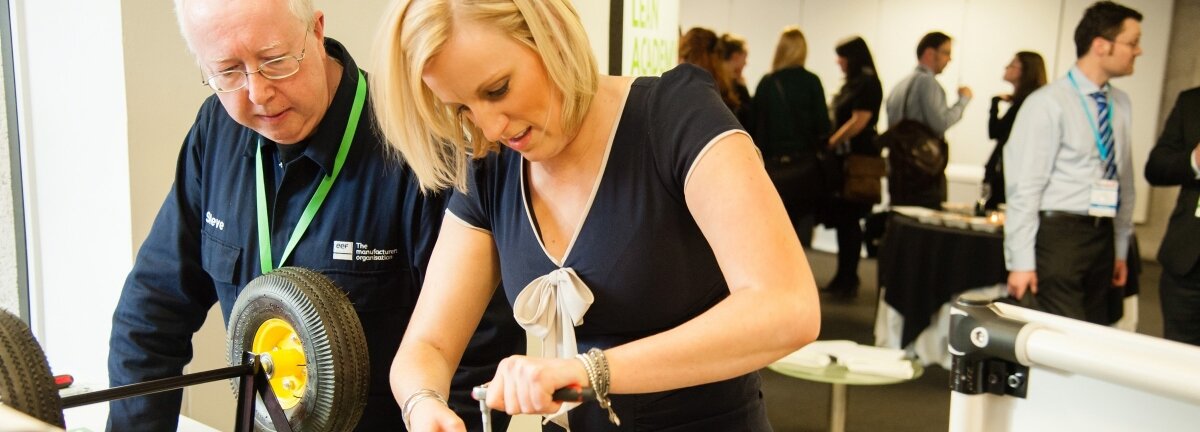Lean and good design – a marriage made in heaven?

Dr Steve Chicken CEng MIED is Manufacturing Growth Director at EEF, the manufacturers’ organisation. EEF is exhibiting its Lean Academy at Design Council’s Leading Business by Design Summit on 18 June. Follow this link to register - quote ‘chick200’ to get £200 off your ticket.
Britain is on the cusp of a technology-driven fourth industrial revolution that is expected to become a widespread reality of manufacturing life within the next decade. In the global battle for dominance, innovative firms will take the lead and help position Britain as the manufacturing and technology hub of Europe.
The rapid advance in technology will play to Britain’s strength as a high value manufacturer, bringing benefits such as the ability to produce more bespoke products and more rapid and cheaper prototyping.
In other words, both design and Lean are about to become even more important.
Lean is a business strategy geared around continuously improving processes and efficiency, leading to greater productivity. It has been readily adopted by industry heavyweights such as JCB and Caterpillar and it can transform businesses, providing manufacturers with game-changing techniques to boost efficiency and growth.
But, this technique isn’t just for factories. It can improve any process – including design.
In fact, Lean can help design in three ways. Firstly, it frees up time and ‘head space’ for design-led thinking to thrive. Secondly, it creates the right culture and process (including embracing continuous feedback) which allows design to become agile, responsive and embedded into the product cycle.
Thirdly, it can help the design process itself to improve. Design projects that run late or over budget? Products that are difficult to manufacture or that leave customers dissatisfied? These are classic signs of the ‘wastes’ that Lean sets out to identify and eliminate.
Other tell-tale signs include:
- Waiting – for authority/approval, for information
- Over-processing – incorrect specifications, obsolete requirements
- Over-production – projects/actions which go nowhere
- Inventory – stalled, partially complete projects
- Motion – finding files in a complex digital environment
- Defects – errors usually due to incorrect specifications or lack of training.
Lean tools can easily address these issues. Value stream mapping, rapid improvement events, spaghetti diagrams, SMED, flow, pull - these are all relevant to design.
So as we head towards Industry 4.0, in design and Lean we have two very powerful weapons which, if used together, should ensure British manufacturing stays one step ahead of the rest of the world.
EEF is exhibiting its Lean Academy at Design Council’s Leading Business by Design Summit on 18 June.
If you have any questions about this blog or about how Lean and design can work together you can find them on site. Follow this link to register - quote ‘chick200’ to get £200 off your ticket.
Subscribe to our newsletter
Want to keep up with the latest from the Design Council?
